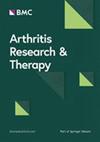KLF11 alleviates rheumatoid arthritis by regulating M1 macrophage polarization via downregulation of YAP1 expression
IF 4.6
2区 医学
Q1 Medicine
引用次数: 0
Abstract
Rheumatoid arthritis (RA) is a chronic autoimmune disease, primarily impacting joints and bones. The Gene Expression Omnibus (GEO) datasets (GSE55235 and GSE10500) revealed that KLF11 expression was lower in the patients with RA, which was confirmed by the collected RA samples. However, KLF11's function and molecular mechanism in RA remain to be elucidated. In our study, we investigated this issue using in vivo and in vitro models. Our findings consistently demonstrated the downregulation of KLF11 in mice with collagen-induced arthritis (CIA). Overexpression of KLF11 reduced the arthritis severity and the extent of bone destruction in mice with CIA, whereas KLF11 knockdown exerted the opposite effect. Additionally, it was noted to inhibit M1 macrophage polarization and the ERK pathway both in vivo and in vitro. The JASPAR database indicated the potential for KLF11 to bind to the YAP1 promoter region. ChIP and dual-luciferase reporter assays confirmed the binding of KLF11 to the promoter of YAP1. Further experiments demonstrated that KLF11 negatively regulated YAP1 expression in THP-1 cells. YAP1 overexpression partially reversed the KLF11's inhibitory effect on the ERK signaling pathway and M1 macrophage polarization in vitro. KLF11 may be a promising therapeutic target for RA.KLF11通过下调YAP1表达,调控M1巨噬细胞极化,从而缓解类风湿关节炎
类风湿性关节炎(RA)是一种慢性自身免疫性疾病,主要影响关节和骨骼。基因表达综合(GEO)数据集(GSE55235和GSE10500)显示,KLF11在RA患者中的表达较低,这一点被收集的RA样本所证实。然而,KLF11在RA中的功能和分子机制尚不清楚。在我们的研究中,我们使用体内和体外模型来研究这个问题。我们的研究结果一致表明,KLF11在胶原诱导关节炎(CIA)小鼠中下调。在CIA小鼠中,KLF11的过表达降低了关节炎的严重程度和骨破坏程度,而KLF11的敲低则起到相反的作用。此外,在体内和体外均可抑制M1巨噬细胞极化和ERK通路。JASPAR数据库显示KLF11有可能结合到YAP1启动子区域。ChIP和双荧光素酶报告基因检测证实了KLF11与YAP1启动子的结合。进一步的实验表明,KLF11负向调控THP-1细胞中YAP1的表达。YAP1过表达部分逆转了KLF11对ERK信号通路和M1巨噬细胞极化的抑制作用。KLF11可能是一个有希望的治疗RA的靶点。
本文章由计算机程序翻译,如有差异,请以英文原文为准。
求助全文
约1分钟内获得全文
求助全文
来源期刊

Arthritis Research & Therapy
RHEUMATOLOGY-
CiteScore
8.60
自引率
2.00%
发文量
261
审稿时长
14 weeks
期刊介绍:
Established in 1999, Arthritis Research and Therapy is an international, open access, peer-reviewed journal, publishing original articles in the area of musculoskeletal research and therapy as well as, reviews, commentaries and reports. A major focus of the journal is on the immunologic processes leading to inflammation, damage and repair as they relate to autoimmune rheumatic and musculoskeletal conditions, and which inform the translation of this knowledge into advances in clinical care. Original basic, translational and clinical research is considered for publication along with results of early and late phase therapeutic trials, especially as they pertain to the underpinning science that informs clinical observations in interventional studies.
 求助内容:
求助内容: 应助结果提醒方式:
应助结果提醒方式:


